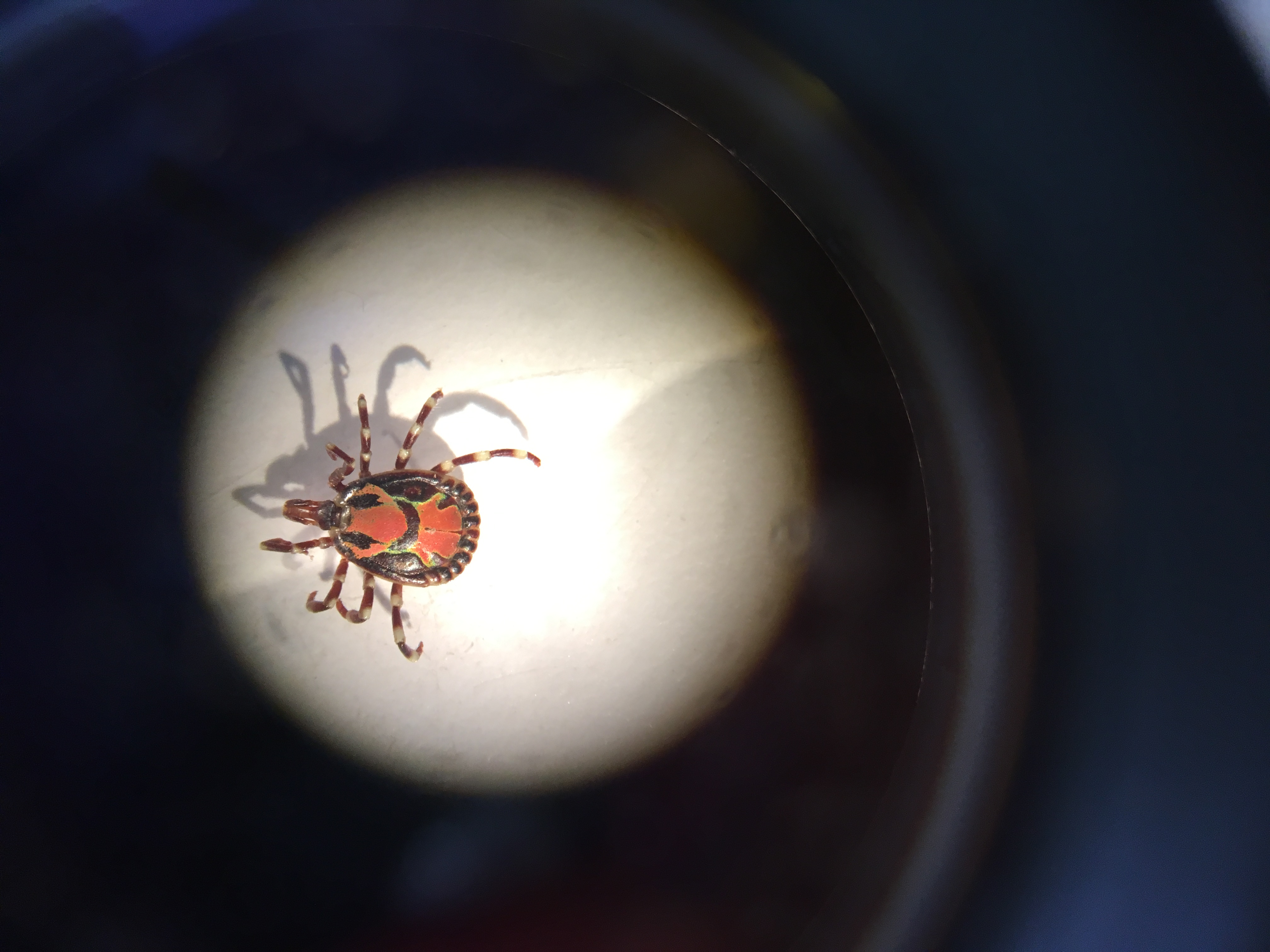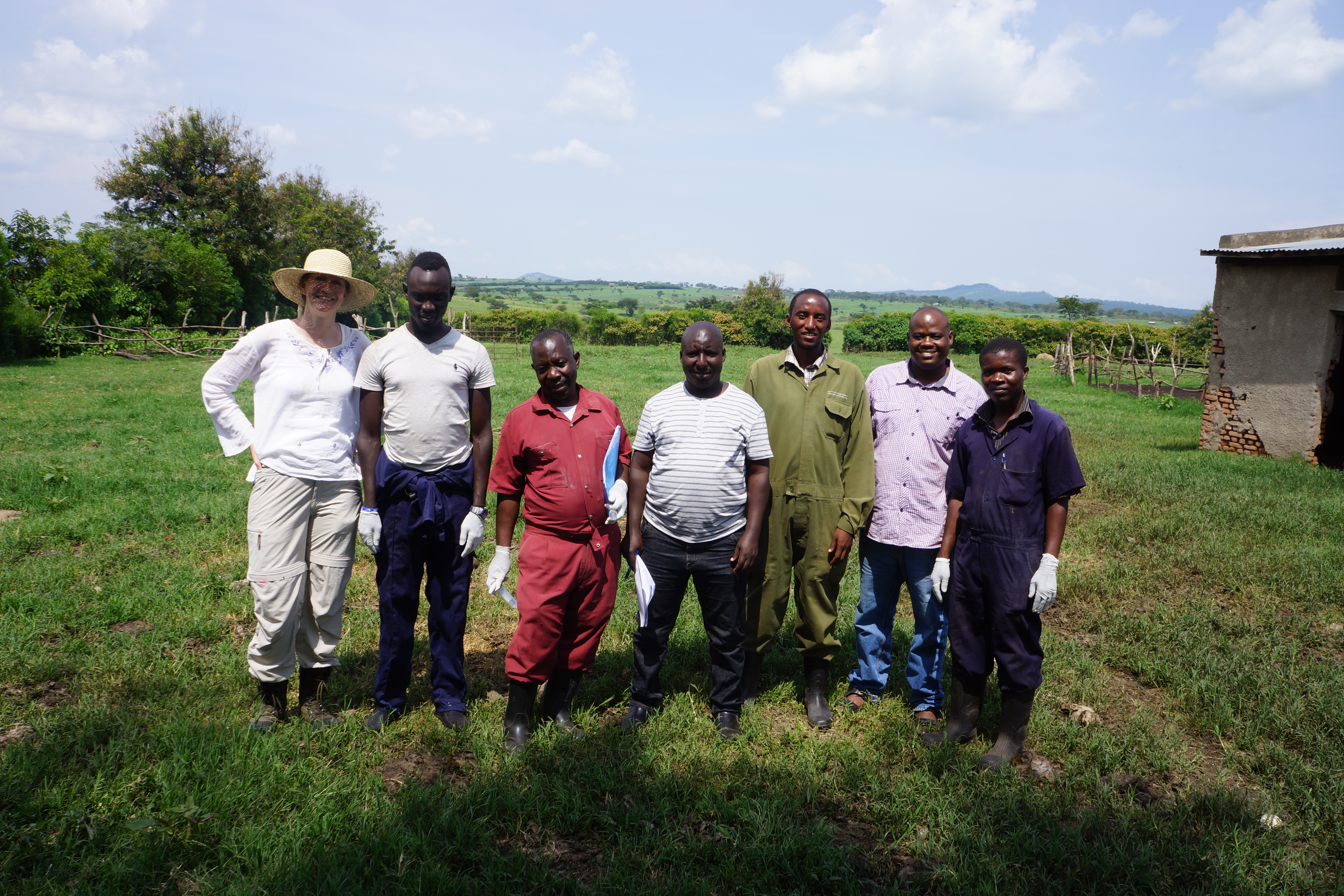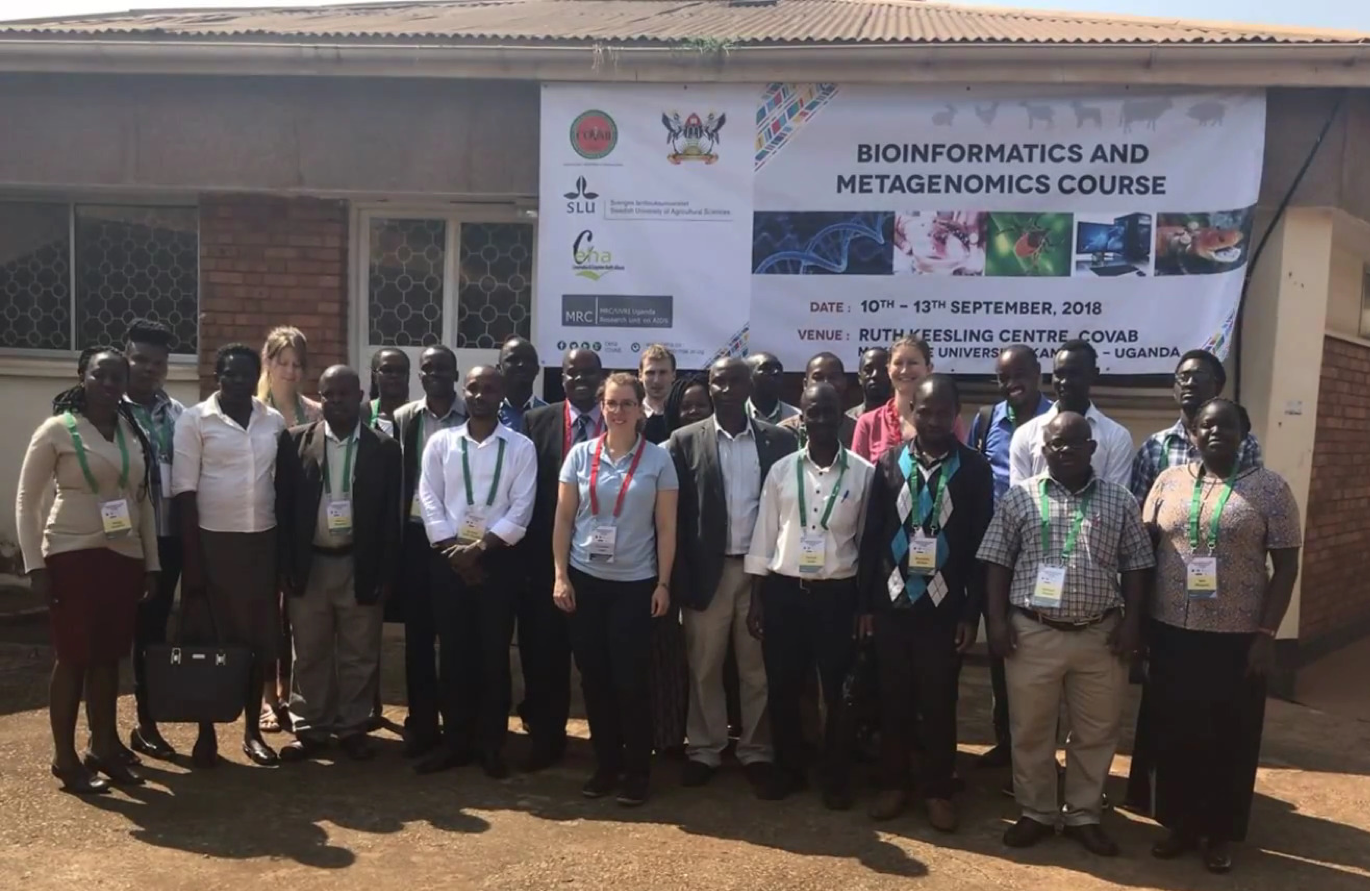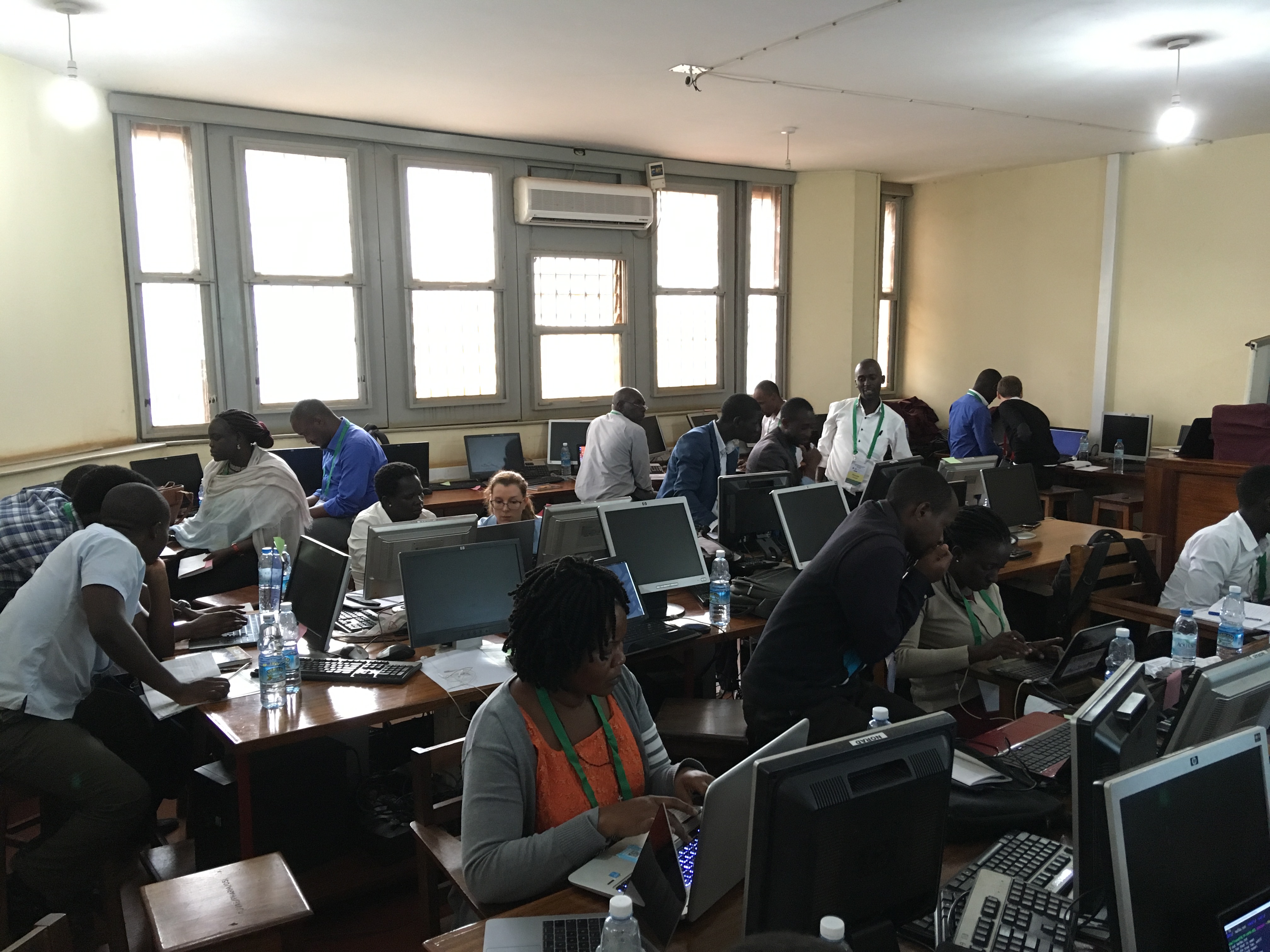Ticks and Tick Borne Diseases (TBDs) in Africa
The overall purpose of the project is to improve cattle health through increased understanding of the microbial community in cattle and ticks, by investigation of the microbial composition (microbiota) of ticks and how this affects transmission and disease development in cattle in Uganda.
The project

Background
Ticks are the most important vectors of disease-causing pathogens in domestic and wild animals and tick-borne diseases (TBDs) are a major threat to both cattle and human health. Understanding the complex interactions within the microbiome is of great importance for understanding how tick-borne pathogens spread and cause disease. Our results will give us insights into the microbiome of cattle and its relation to tick microbiome. Possibly, new diseases causing agents will be identified.
These results can be used to develop diagnostic tests. Through fast and accurate diagnostics, proper treatment can be quickly started, thus reducing spread of infection. Improved health in cattle can also increase production. The study will also contribute with knowledge on how cattle owners understand the relationships between ticks, cattle and TBDs. The knowledge generated in this project can contribute to more appropriately designed interventions for diagnosis and prevention of TBDs.
Aims of the project
- To morphologically and genetically describe the tick species population feeding on cattle in Uganda.
- To determine the seroprevalence of Crimean-Congo Hemorrhagic Fever Virus in Ugandan cattle.
- To describe the cattle owners’ perception of ticks and TBDs, disease management and general farm challenges.
- To investigate the presence of known and, possibly, unknown viruses, bacteria and parasites in ticks.
- To investigate the presence of known, and possibly, unknown viruses, bacteria and parasites in blood from cattle.
The team
Principal investigator: Dr. Maja Malmberg - Swedish University of Agricultural Sciences, Biomedical Sciences and Veterinary Public Health, Sweden
Co-PI in Uganda: Ass. professor Lawrence Mugisha - Makerere University, College of Veterinary Medicine, Animal Resources and Biosecurity, Uganda and Ecohealth Research Group, Conservation & Ecosystem Health Alliance, Uganda
PhD student: Mr. Stephen Balinandi - Uganda Virus Research Institute, Uganda and Makerere University, College of Veterinary Medicine, Animal Resources and Biosecurity, Uganda
Professor Erik Bongcam Rudloff - Swedish University of Agricultural Sciences, Department of Animal Breeding and Genetics, Sweden
Dr. Erika Chenais - National Veterinary Institute, Sweden
Ass. professor Klara Fischer - Swedish University of Agricultural Sciences, Department of Rural and Urban Development, Sweden
Dr. Lidia Chitimia-Dobler - Bundeswehr Institute of Microbiology and University of Hohenheim, Department of Parasitology, Germany
Dr. John Pettersson - Uppsala University, Department of Medical Biochemistry and Microbiology, Sweden
Dr. Juliette Hayer - Swedish University of Agricultural Sciences, Department of Animal Breeding and Genetics, Sweden
Professor Mikael Berg - Swedish University of Agricultural Sciences, Biomedical Sciences and Veterinary Public Health, Sweden
Dr. Giulio Grandi - Swedish University of Agricultural Sciences, Biomedical Sciences and Veterinary Public Health, Sweden
Ass. professor Ingrid Hansson - Swedish University of Agricultural Sciences, Biomedical Sciences and Veterinary Public Health, Sweden
Publications
2021
- Serological and molecular study of Crimean-Congo Hemorrhagic Fever Virus in cattle from selected districts in Uganda. - Balinandi S, von Brömssen C, Tumusiime A, Kyondo J, Kwon H, Monteil VM, Mirazimi A, Lutwama J, Mugisha L, Malmberg M. Journal of Virological Methods. Vol 290. 114075. April 2021. DOI: 10.1016/j.jviromet.2021.114075
Raw data can be found here
2020
- Morphological and molecular identification of ixodid tick species (Acari: Ixodidae) infesting cattle in Uganda - Balinandi S, Chitimia-Dobler L, Giulio G, Nakayiki T, Kabasa W, Bbira J, Lutwama JJ, Malmberg M, Mugisha L. Parasitology Research. 13th Jun 2020.
2019
- General and Local Morphological Anomalies in Amblyomma lepidum (Acari: Ixodidae) and Rhipicephalus decoloratus Infesting Cattle in Uganda - Balinandi S, Mugisha L, Bbira J, Kabasa W, Nakayiki T, Bakkes DK, Lutwama JJ, Chitimia-Dobler L, Malmberg M. J Med Entomol. 2019 Apr 16;56(3):873-877.
2018
- Increasing the local relevance of epidemiological research: Situated knowledge of cattle disease among Basongora pastoralists in Uganda – Chenias E, Fischer K. Front Vet Sci. 2018 Jun 7;5:119.
Conferences
-
Mugisha L., Grandi G., Balinandi S., Nakayiki T., Kabasa W., Bbira J., Chitimia-Dobler L., Malmberg M. Ticks (Acari: Ixodidae) infesting Cattle in Selected Districts of Uganda, 2017. Swedish Network for Tick Researchers 3-5th June 2019 - oral presentation
-
Balinandi S, Mugisha L, Lutwama J, Malmberg M. A Seroprevalence Study of Crimean-Congo Hemorrhagic Fever Virus in Cattle, Uganda, 2017. One Health Sweden conference 26-27th March 2019, Uppsala, Sweden. – Poster presentation
-
An interdisciplinary approach addressing ticks and tick-borne diseases of cattle in Uganda. Mugisha L, Balinandi S, Berg M, Bongcam-Rudloff E, Chenais E, Chitimia-Dobler L, Fischer K, Grandi G, Hansson I, Hayer J, Pettersson JHO, Malmberg M (authors in alphabetic order except for 1st and last author) – presented at the Rethinking development conference, in Gothenburg in Aug 2018, at the Swedish Society of Virology meeting in Aug 2018 and 11th International Congress for Veterinary Virology in Vienna Aug 2018.
-
M Malmberg presented at the research seminar at Makerere University, Kampala, Uganda, the 20th of Sep 2018.
-
Increasing the local relevance of epidemiological research: Situated knowledge of cattle disease among Basongora pastoralists in Uganda – Chenias E, Fischer K. International Society for Social Science and Economy in Animal Health (ISESSAH) in Montpellier May 2018 (oral presentation).
-
Mugisha L, Balinandi S, Berg M, Bongcam-Rudloff E, Chenais E, Chitimia-Dobler L, Fischer K, Grandi G, Hansson I, Hayer J, Pettersson JHO, Malmberg M. An interdisciplinary approach addressing ticks and tick-borne diseases of cattle in Uganda. Swedish Network for Tick Researchers in May 2017 (oral presentation).
Capacity building
Workshops
-
Workshop 1 –Tick & Tick-Borne Diseases Pathogen Research Workshop (18-20th Sep 2017) hosted by Dr. Lidia Chitima-Dobler, Dr. Maja Malmberg, Dr. Anne Nanteza, and Dr. Lawrence Mugisha. Approximately 25 participants from UVRI, COVAB, MAIFF.
-
Workshop 2 – Bioinformatics and metagenomics (10-14th Sep 2018). Dr. Juliette Hayer, Mr. Hadrien Gourlé, Dr. Maja Malmberg from SLU, together with Dr. Charles Masembe, Dr. Ann Nantesa, and Dr. Lawrence Mugisha (Makerere University), organized this workshop that was well appreciated among the 20 participants, mainly PhD students from a multitude of disciplines.
The tick museum
A specimen of an Amblyomma lepidum with absence of genital aperture, an Amblyomma lepidum displaying gynandromorphism and a Rhipicephalus decoloratus with multiple morphological anomalies have been identified and constitutes now the first specimens in Uganda Virus Research Institute’s tick museum.
Infrastructure
MinION sequencing infrastructure have been set up at Uganda Virus Research Institute.
Students
- PhD student Stephen Balinandi was admitted by graduate school at Makerere University in 2017.
- A high school student from Sweden did a small research project in Oct 2017.
- Master student Ivan Oulok was trained on examination of microscopical slides.
- MSc: Mikael Peteri Brunbäck - Investigation of Crimean-Congo Hemorrhagic Fever Virus (CCHFV) in Hyalomma spp. ticks and evaluation of knowledge and practices related to ticks and CCHF among the Karamojong pastoralists in Moroto district, Uganda
- MSc: Charles Semakula – Prevalence of Bunya viruses in ticks collected on cattle from Karamoja region in Uganda
Funding
Our research is supported by the Swedish Research Council (Grant number 2016-05705) - 2017-2020
Contact
If you have any question regarding our project, please feel free to contact us!








